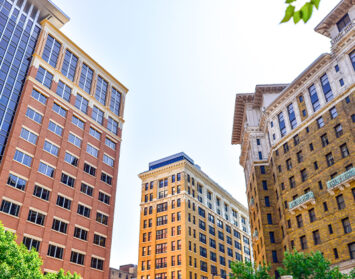
We like to talk about San Diego as a world-class city. To a certain extent, we have become a global metropolis, given our tourism amenities, a major port and naval presence, a revitalized and exciting central business district, our reputation as a international hub in the wireless technology industry, and home to UC San Diego.
These attributes were not easily acquired; they were the result of having an extraordinary vision and courageous dose of faith in our region, overcoming political complexities, and taking considerable financial risks.
We now have an opportunity to take a giant step to further equip our city to compete among other world centers. But, as with earlier feats, the proposal to build a football stadium, a sports arena and an expanded convention center along the San Diego waterfront, is a difficult task. It is also the most comprehensive means we have to provide the infrastructure necessary to heighten our city’s appeal. Additionally, these amenities would produce jobs and more revenue for businesses, which translate into more tax money for providing services.
The Big Ending
The plan for a sports entertainment district on the 100-acre site of the 10th Avenue Marine Terminal would combine the three critically needed amenities into one ambitious undertaking which would require more work and a longer waiting period than just building a stadium. But the end result would be well worth the efforts. The new stadium site would be far more spacious than the 15-acre bus-yard site now being studied in East Village, and would provide a comfortable home for our NFL franchise for the long term. A sports arena replaces the dreary 50-year-old complex in the Midway District and would give our city a highly marketable indoor venue for large-scale entertainment and sporting events, including the possibility of an NBA franchise. The expanded convention center would equip San Diego to compete for all conventions.
The Ship Is Out
This is not the first time the 10th Avenue industrial site has been discussed for potential development. Over the past decade, plans for a stadium on the site have been rebuffed on several occasions by labor, the San Diego Port Authority and other agencies who apparently thought its present use as a terminal for a couple hundred longshoremen to unload bananas and other imported goods is its best use. That’s going to be a harder case for opponents to make now with an expanded multifacility complex that will create thousands of construction and permanent jobs and stimulate additional development nearby that otherwise wouldn’t take place.
Aside from identifying the revenues for an estimated $1.5 billion project, the real challenges will be the complex regulatory and approval processes. To redevelop the site would require approvals from the port authority, the city, the county, the state Legislature, the state Lands Commission, the state Coastal Commission, and the U.S. Army Corps of Engineers.
To be sure, $1.5 billion is a boatload of money, but it is considerably lower than it would be for all three projects if undertaken one by one over several years.
As an urban community with diverse priorities and outlooks, we need to come together around a common vision, one that will create economic prosperity for all. Then, we must work to amass the resources, overcome the obstacles and make it a reality.
If we want to be a genuine world-class city, it will require nothing less.
Jason Hughes is chairman, CEO, and owner of Hughes Marino, an award-winning commercial real estate company with offices across the nation. A pioneer in the field of tenant representation, Jason has exclusively represented tenants and buyers for more than 30 years. Contact Jason at 1-844-662-6635 or jason@hughesmarino.com to learn more.









